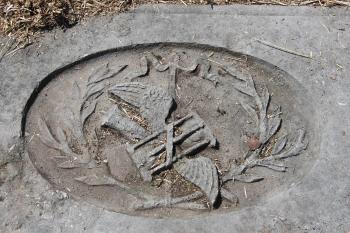Glossaries
| Term | Definition |
|---|---|
| halo | In religious art a ring of light around the head of divine or sacred persons. The nimbus can take different shapes. The cruciform nimbus is usually the attribute of Christ. A triangular nimbus, the symbol of the Trinity, belongs to God the Father. A square nimbus is for ecclesiastical and secular contemporaries, such as popes, emperors and founders. The well-known circular halo belongs in particular to Mary, to angels and saints. |
| heart | In Western culture, the heart mainly symbolizes religious and worldly love, think of a heart with thorns or a valentine heart. Besides the cross, the heart is one of the most used symbols in the world. The meaning of the heart as a symbol differs per culture. In the East it is mainly associated with intelligence and wisdom. In Christian symbolism, the heart generally refers to Jesus ("the sacred heart of Jesus") and is found in the open chest containing a heart with a flame. There are also hearts with a crown of thorns or surrounded by sun rays. A heart crowned with thorns is the emblem of the Jesuits. A heart surrounded by flames refers to religious inspiration. A heart with three nails through it and surrounded by a crown of thorns is the Christian 'Sacred Heart'. In the Bible the heart is the 'inner man': "But the Lord said to Samuel, Look not on his form, nor the height of his stature, for I have rejected him; for it is not as man sees, for man look on the outlook, but the Lord looks on the heart. " (1 Samuel 16: 7). In funerary use, the heart appears on many gravestones as a symbol. As a general symbol for love and marriage, but also in combination with the Anchor and Cross which together represent the main Christian virtues: faith, hope and love. It also symbolizes the bond with Christ. |
| host | Reference to the body of Christ and the Bread of Life, the Eucharist or the Lord's Supper. Mostly depicted in combination with a chalice on Catholic priests tombs. |
| hourglass |
Most hourglasses have wings. They symbolize the passing of time and the transience of man. Usually it is the wings of a dove, but it also happens that the hourglass has one pigeon wing and one bat wing. This symbolizes the passing of life, day and night, in good and evil. The reversibility of the hourglass is seen in the Christian tradition as the new life and the resurrection. |



 The
The